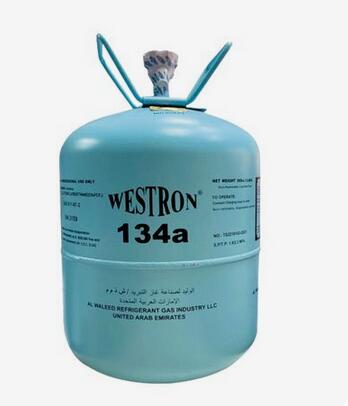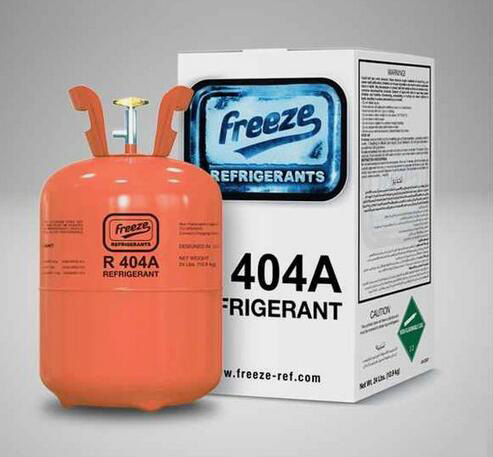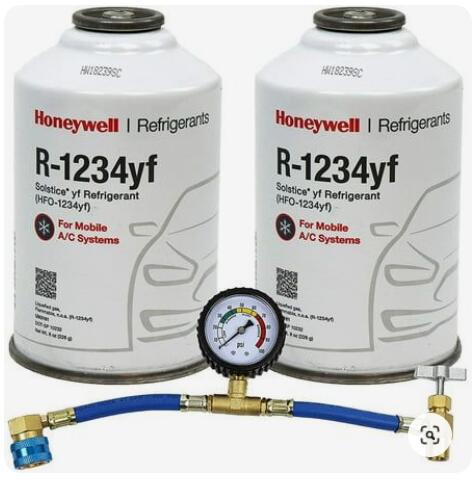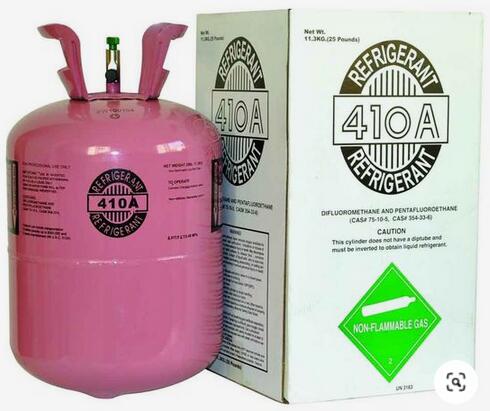Electric vehicle air conditioning systems use refrigerants to deliver energy for heating and cooling a vehicle’s passenger compartment. Refrigerant is a type of chemical that absorbs heat in one phase and releases it in another phase at a lower temperature. This process enables an electric vehicle A/C system to condition the air inside the cabin while also cooling or heating it as desired. In this article, we'll explain what types of refrigerants are used in electric vehicle air conditioning systems along with some pros and cons that come with each type!
What is Refrigerant?
Refrigerant is a substance that can be used to transfer heat from one place to another. It is commonly used in air conditioning systems and refrigeration units, but it has many other uses as well. Refrigerants are often divided into two types: refrigerants and refrigerant-like compounds (RLCs). The former refers specifically to those gases that have been approved by the EPA for use as refrigerants in cooling equipment; RLCs include all other gases, such as ammonia or propane.
Function of Refrigerant
The refrigerant is a crucial component of EV A/C systems. It's used to cool the air in an EV, and it must be stored at high pressures so that it can be circulated through the A/C system. The refrigerant then undergoes a process called condensation, which converts it back into its liquid state so that it can be reused.
There are several different types of refrigerants available today, but all of them rely on the same basic principles of cooling. A liquid refrigerant is compressed by
electric car ac compressor and then vaporized into a gas that absorbs heat from inside the appliance. This hot gas is then cooled down again through a condenser, which turns it back into liquid form so it can be reused in another cycle.
CFC refrigerants include R11, R12, R13, R502, R503
HCFC refrigerants include R22, R123, R124, R141b, R142b, R402A, R402B, R408A, R409A
HFC refrigerants include R134a, R410A, R407C, R417A, R404A, R507, R23, R508A, R508B, R152a
Six Types of Refrigerants that are Commonly Used in EV A/C System

◆ R134a refrigerant
R134a is an HFC that was introduced in 1993 as a replacement for R12 (CFC) and R22 (HCFC). While these were banned due to their negative effect on Earth's ozone layer, R134a contains no chlorine atoms and so doesn't pose this same risk.
It also works well at low temperatures and has a higher boiling point than its predecessors, making it ideal for use in automotive air conditioners. Globally, more than 50% of R134a is used as a refrigerant in automobile air conditioners. With the explosive growth of car ownership (especially in China), the market demand for R134a will be quite large.
| Code |
Substance Name |
Chemical Name |
Chemical Formula |
GWP (AR4) |
| R-134A |
HFC-134a |
Tetrafluoroethane |
CH2FCF3 |
1,300 |
The problem with R134a is that it contains fluorine, which is highly toxic to humans if ingested. This can be dangerous in small amounts but becomes even more problematic when there's a leak or spill of the substance and people breathe in its vapors.
Most of Guchen’s electric compressors are using R134a refrigerant, such as
high voltage 800v electrically-powered compressor.
◆ R404A refrigerant
R404A is another HFC, which was introduced in the 1900’s. It performs well as a cooling agent in both residential and commercial applications. It can be used as a replacement for R22 and R502, which has been phased out due to its negative impact on the ozone layer.
R404A is a chlorine-free non-azeotropic mixed refrigerant. It is stored in steel cylinders and is a compressed liquefied gas. Its ODP is 0, so R404A is an environmentally friendly refrigerant that does not destroy the ozone layer of the atmosphere.
| Code |
HFC Blend Name |
GWP (AR4) |
| R-404A |
HFC-404A |
3,922 |
◆ R407C refrigerant
R407C hydrofluorocarbon (HFC) refrigerant was introduced in the early 1990s as an alternative to R22. Unlike other CFCs and HCFCs that deplete the ozone layer, this one does not deplete ozone at all - making it much safer for the environment than other refrigerants. It has a global warming potential (GWP) of 1774.
This low GWP refrigerant is used in commercial and industrial air conditioning systems, as well as
electric bus air conditioning systems. Large electric vehicles use R407C because it has a high heat transfer rate, meaning that it can quickly cool down the cabin of an EV or make your precious cargoes cold on hot summer days.
| Code |
HFC Blend Name |
GWP (AR4) |
| R-407C |
HFC-407C |
1,774 |
It's nonflammable and less toxic than its predecessor. It's known for its low global warming potential (GWP) rating, which means it only has a low effect on climate change when compared to other refrigerants.
◆ R1234yf refrigerant
R1234yf is a hydrofluoroolefin (HFO) refrigerant. It was introduced in 2015 as a replacement for various older refrigerants, including R134a and R22. The purpose of this change was to reduce the environmental impact of refrigerants by reducing greenhouse gas emissions and ozone depletion potential.
From January 1, 2017, it is prohibited to use any refrigerants with GWP>150 in automotive industry. It can be seen that the gradual phase-out of R134a (GWP=1300), which is widely used as a refrigerant for automobile air conditioners, will become an inevitable trend. The fourth-generation refrigerant R1234yf is considered to be a new generation of environmentally friendly refrigerant to replace R134a, so R1234yf is first used in automotive air conditioners.
| Code |
Substance Name |
Chemical Formula |
GWP (AR4) |
| R-1234yf |
HFO-1234yf |
2,3,3,3 Tetrafluoropropene |
4 |
HFOs have no chlorine atoms, so they do not contribute to stratospheric ozone depletion. R1234yf refrigeration has almost no ozone depletion potential (ODP).
Guchen EAC has already completed the development of its products with the new refrigerant R-1234yf, and they are available for sale. Full adoption of the new refrigerant R-1234YF will greatly reduce the carbon dioxide emissions of our products and help improve global environmental protection. This is a very positive step in Guchen EAC's environmental protection efforts, which is also an important contribution to China's efforts to reduce carbon dioxide emissions.
Related product:
R1234yf 66cc 540V DC Electric Compressor
◆ R410A refrigerant
R410A refrigerant is a mixed HFC refrigerant consisting of 50% R-32 (difluoromethane) and 50% R-125 (pentafluoroethane). The working pressure is about 1.6 times that of ordinary R22 air conditioners, and the cooling/warming efficiency is high.
R410A is designed to replace R22 in various commercial and industrial applications, including central air conditioning systems and heat pumps. The combination of R32 and R125 provides excellent heat transfer qualities at low temperature conditions, making it ideal for use in large commercial buildings where cooling capacity is required at temperatures below 10℃.
| Code |
HFC Blend Name |
GWP (AR4) |
| R-410A |
HFC-410A |
2,088 |
R-410A has an atmospheric lifetime of 16 years when released into the atmosphere.
Application of R410A refrigerant: Mainly used in household air conditioners, small and medium commercial air conditioners, mobile air conditioners, dehumidifiers, refrigeration dryers, and some refrigeration applications such as marine refrigeration equipment, industrial refrigeration.
◆ R744 (CO2) refrigerant
R744 (CO2) is a non-flammable gas that has a global warming potential of 1 when released directly into the atmosphere. It can be used in many different types of systems, including systems that use fluorinated hydrocarbons (HFCs) such as R134a or R404A.
The main advantages of using R744 refrigerant are:
◆ Improved energy efficiency due to its high heat transfer coefficient;
◆ Improved safety due to its nonflammability;
◆Lower operating costs due to lower refrigerant charge compared to other fluorinated refrigerants;
◆ Reduced greenhouse gas emissions. It has zero ozone depletion potential (ODP).
◆ Low toxicity - does not contain chlorine or bromine, so it is safe for the environment and people to handle during servicing. This makes it particularly suited for use in buildings or in air conditioning systems where there are health and safety concerns about handling other gases.
| Code |
Substance Name |
Chemical Name |
Chemical Formula |
GWP (AR4) |
| R-744 |
HC-744 |
Carbon Dioxide |
CO2 |
1 |
It has the lowest global warming potential (GWP) of any refrigerant currently available for use in new equipment, making it an option for very high efficiency systems. The main advantages of R744 are its non-toxicity and its high pressure properties. It also has a lower boiling point than other low GWP alternatives such as HFOs which makes it suitable for ultra-low and low refrigeration application
Extension Reading:
Advantages and Challenges of CO₂ (R744) Refrigerant in Automotive Air Conditioning Systems 




